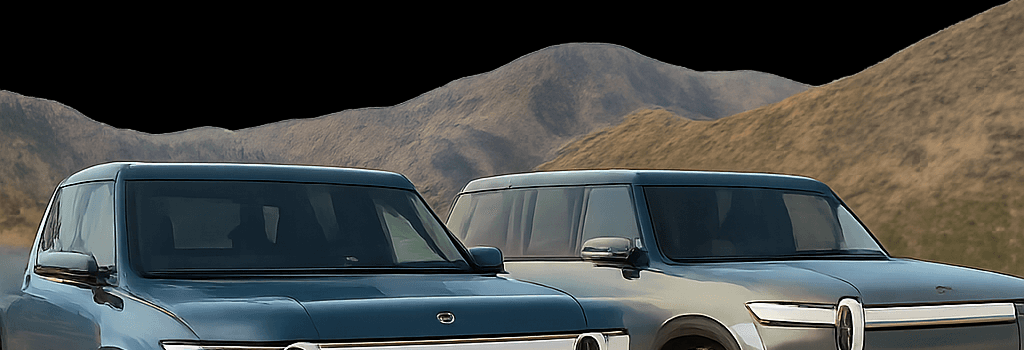Rivian’s Gen 2 R1T and R1S: Versatile Quad-Motor Performance

Introduction
Rivian has raised the bar yet again with its second-generation Quad-Motor R1T pickup and R1S SUV. By combining supercar-level acceleration, best-in-class torque vectoring and advanced off-road capabilities, these electric vehicles demonstrate that performance and utility need not be mutually exclusive. In this in-depth analysis, we explore the technical innovations under the skin, latest software and hardware updates, and expert insights that position Rivian at the forefront of all-terrain electrification.
Quad-Motor Architecture and Performance Metrics
Individual Wheel Control and Torque Vectoring
The hallmark of the Quad-Motor setup is a dedicated motor on each wheel, delivering a combined 1,025 hp (764 kW) and 1,198 lb-ft (1,624 Nm) of torque. Rivian’s bespoke e-axles eliminate conventional differentials, reducing mechanical losses (up to 12%) and lowering unsprung mass. Each motor features a two-stage planetary gearbox, enabling a wide torque band from 0 rpm to 12,000 rpm.
- 0–60 mph: 2.5 s (R1T), 2.6 s (R1S)
- Top speed: 125 mph (electronically limited)
- Towing capacity: 11,000 lb (R1T)
- Seating: Up to seven passengers (R1S)
Battery System and Charging Innovations
Under the floor sits a 141 kWh (usable) nickel-manganese-cobalt (NMC) pouch cell pack with an advanced thermal management loop. A dual-loop coolant circuit separates the high-voltage battery from the cold plate cooling the inverter and power electronics. Recent over-the-air (OTA) updates have optimized the heat pump control logic, improving low-temperature charging efficiency by 8% and extending EPA range to 380 miles in cold climates.
NACS Port Adoption
In response to market feedback, Rivian has fully integrated Tesla’s North American Charging Standard (NACS) port. This grants access to Tesla’s Supercharger network (250 kW peak), supplementing CCS1 compatibility. The dual-port strategy accelerates road trip viability and reduces dependency on third-party fast-charger reservation systems.
On-Road Dynamics: Merging Supercar Speed with Truck Utility
Switching to the optional Michelin Pilot Sport 5 S summer tires and 22″ staggered wheels unlocks the full 2.5-second sprint. Rivian’s Active Anti-Roll Bar (AARB) system dynamically adjusts bar preload in 10 ms increments, countering body roll in high-G cornering. While steering feel remains artificially weighted by the drive-by-wire system, a forthcoming firmware update aims to refine torque-feedback algorithms.
“The Quad-Motor drivetrain delivers consistently linear power delivery, whether you’re leaping off the line or tip-toeing over rocks,” says Dr. Emily Carter, EV dynamics specialist at AutoTech Labs.
Off-Road Mastery: Beyond Traditional Differentials
On loose gravel or rock gardens, the system’s split-second response to wheel slip reassigns torque without the latency of electronic brake-based traction control. Rivian’s Chassis Control Module samples gyroscope, accelerometer and wheel-speed sensors at 1 kHz, enabling frame-level torque vectoring that emulates a mechanical locking differential without hardware complexity.
- Hill ascent/descent control: Auto-adjusts regen braking per wheel
- Ground clearance: 14.9″ (max) via air suspension
- Approach/Departure angles: 35°/30°
Advanced Off-Road Features: Kick Turn, RAD Tuner & Drive Modes
Rivian’s Kick Turn revives the crowd-pleasing Tank Turn with precision: holding dual steering-wheel buttons engages counter-rotating wheel torques up to 6,000 Nm. The configurable RAD Tuner allows enthusiasts to craft bespoke drive profiles—adjusting suspension stiffness, throttle maps, front-to-rear torque bias and roll stiffness with real-time preview graphs.
Thermal Management and Cooling Architecture
An upgraded 20,000 RPM electric water pump circulates coolant through the battery’s internal microchannels, maintaining cell temperatures within 0–45 °C under sustained high-load scenarios. A latent heat storage module uses phase-change material to buffer thermal spikes during track mode pulls, reducing peak pack temperature by up to 10 °C.
Battery Chemistry and Longevity
Rivian’s 2170-format cells employ a 90% silicon-doped graphite anode for improved energy density (~270 Wh/kg) and accelerated fast-charge acceptance (up to 1C). The pack’s distributed cell monitoring system balances inter-cell voltage variations (<5 mV) during slow charging, enhancing cycle life to an estimated 1,600 cycles before reaching 80% capacity.
Industry Impact and Future Outlook
By marrying cutting-edge drivetrain topology with a robust software ecosystem, Rivian sets new standards for all-terrain EV design. The Quad-Motor platform paves the way for next-gen EVs in military, exploration and heavy-equipment sectors. Upcoming collaboration with AWS will introduce AI-driven predictive maintenance, using cloud-based analytics to preemptively detect component wear.
As competition intensifies, Rivian’s agile hardware architecture and OTA capability guarantee continual performance enhancements—cementing its leadership in the Gadgets & Hardware and Tech News domains.